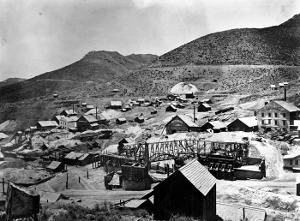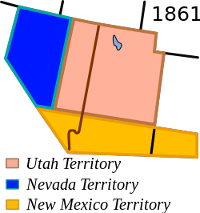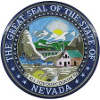The Making of the 50 States: Nevada
Part 2: The Rest of the Story 
Nevada (except for the southern tip) was part of the Utah Territory, established in 1854, and then became its own entity, the Territory of Nevada, in 1861. In between came a population boom, the result of the discovery of the Comstock Lode, the mines of which afforded great quantities of gold, silver, copper, lead, and many other minerals. Cities such as Virginia City blossomed seemingly overnight. Even more settlers came after the passage of the 1862 Homestead Act. Washoe was an early name for the territory, and ranchers and other settlers drew up the Washoe Code to cover land claims and other potential disputes. Nevada was also on the route of the short-lived horse-powered mail delivery service the Pony Express. 
As more Americans moved in, they more and more came into contact with Native Americans. Some of these relations were pleasant: The U.S. signed a treaty of friendship with the Paiute and Shoshone in 1855 and a further treaty with the Shoshone in 1863. However, as with other states, the growing American population and determination to fulfill what they felt was their Manifest Destiny resulted in a dramatic reduction in the number of Native Americans in Nevada. This led to a series of violent confrontations, notably the Snake War, which began in 1864. The drive for statehood for Nevada began in earnest as the Civil War dragged on. A territory-wide vote on the topic was overwhelmingly popular. Nevada residents appointed a committee of 39 people to draft a state constitution. The next statewide vote rejected the constitution. 
The federal government got involved. Congress passed an enabling act, giving President Abraham Lincoln the power to approve a new constitution. In July 1864, lawmakers drafted a new constitution, incorporating statutes that outlawed slavery and provided for popular elections for most state offices, including judges (a practice that wasn't common at the time). The second time around, voters approved the constitution. Nevada became a state on October 31, 1864; the capital was Carson City. First page > In the Beginning > Page 1, 2
|
|
Social Studies for Kids
copyright 2002–2024
David White




